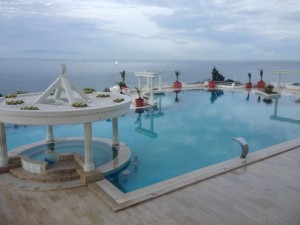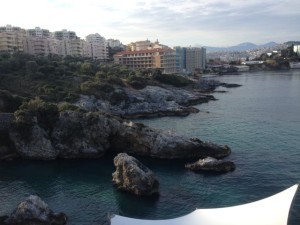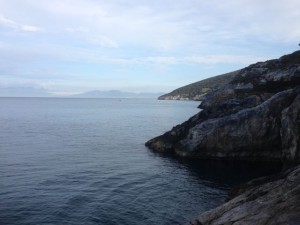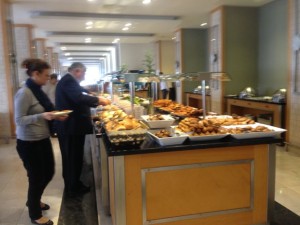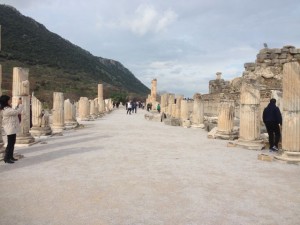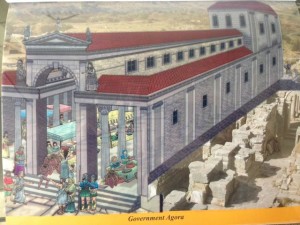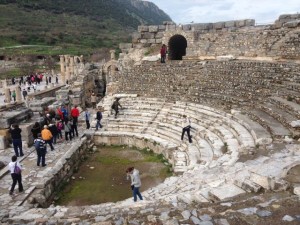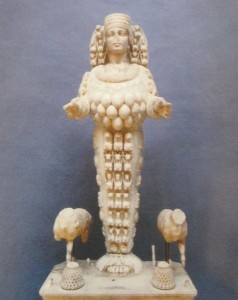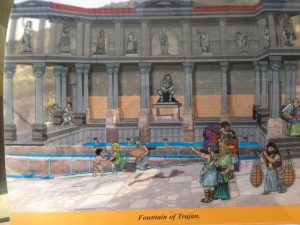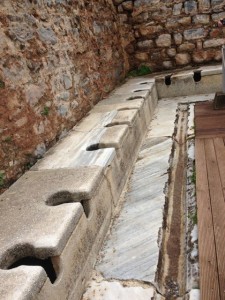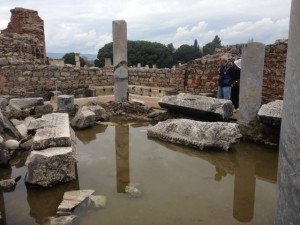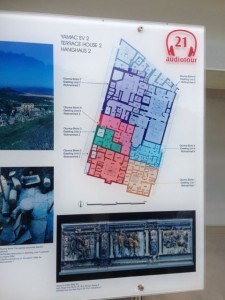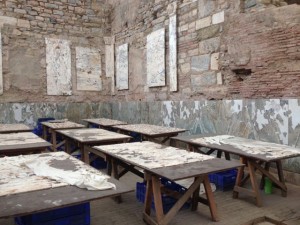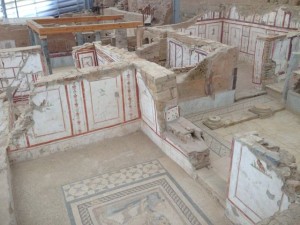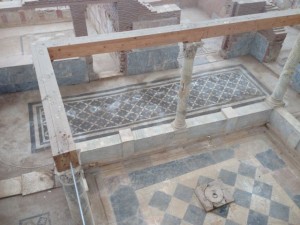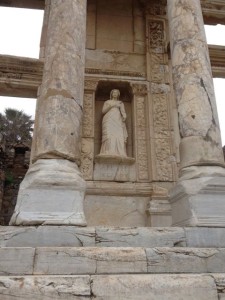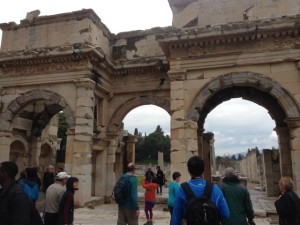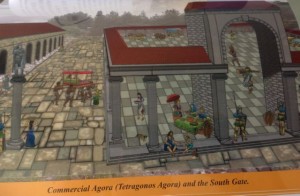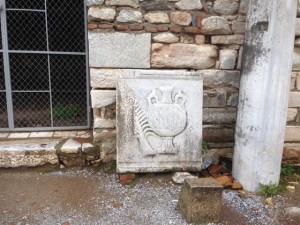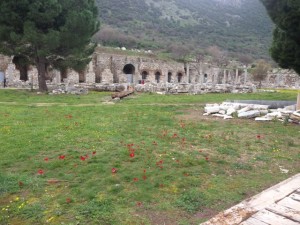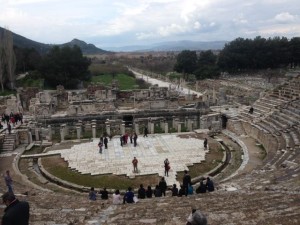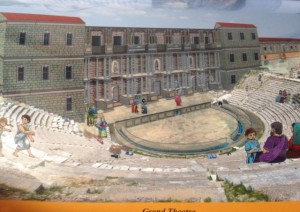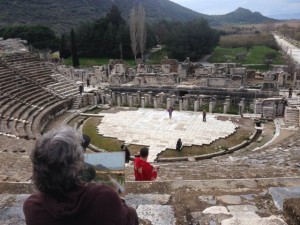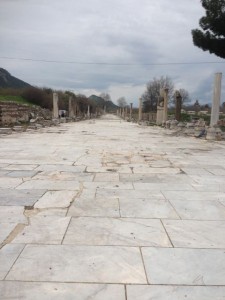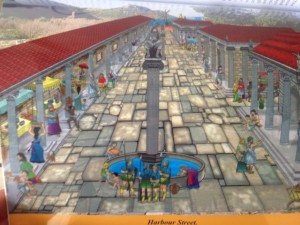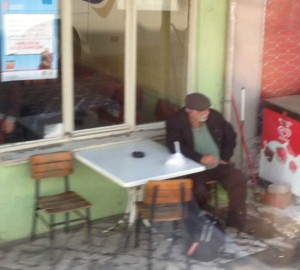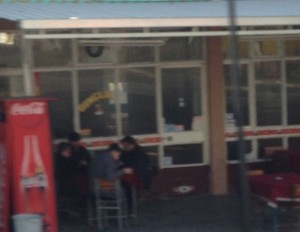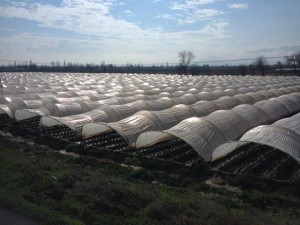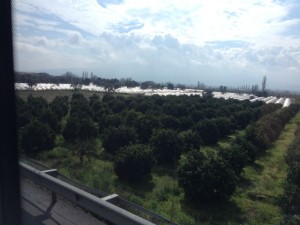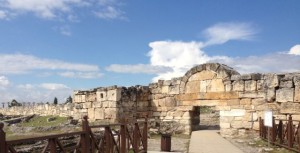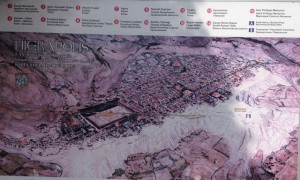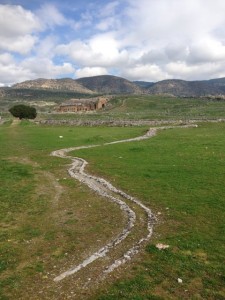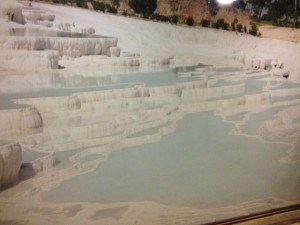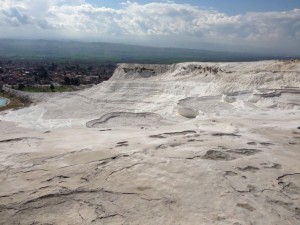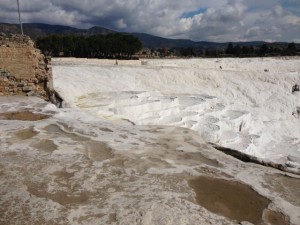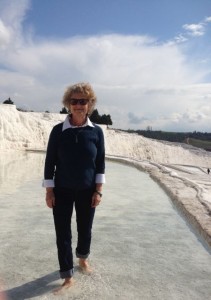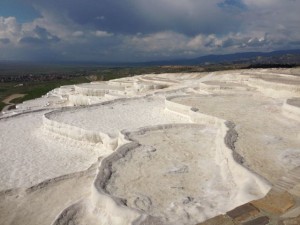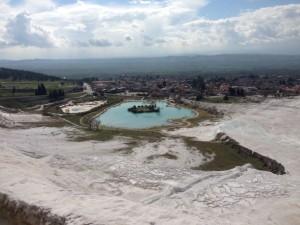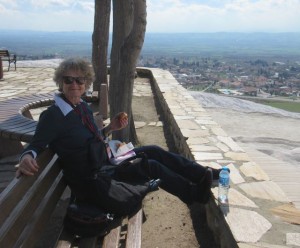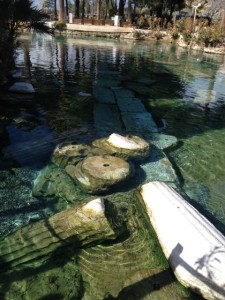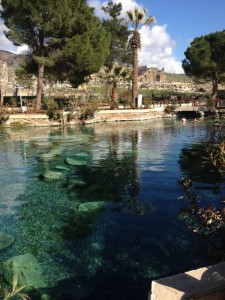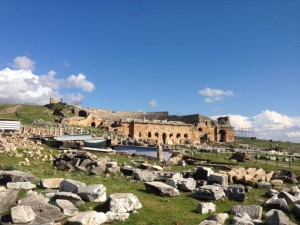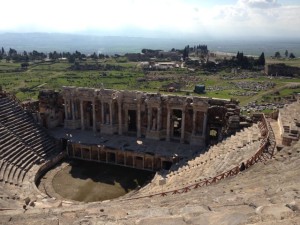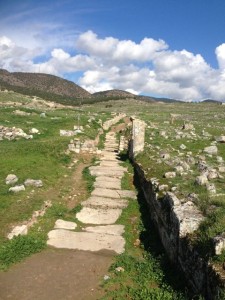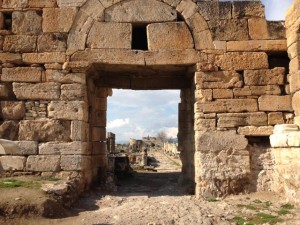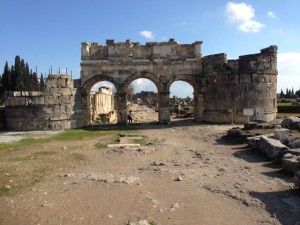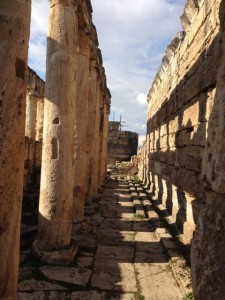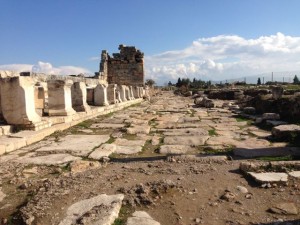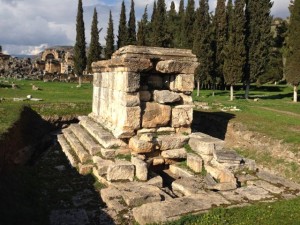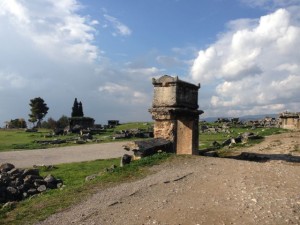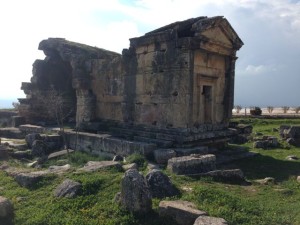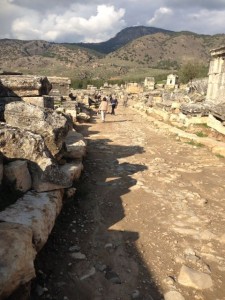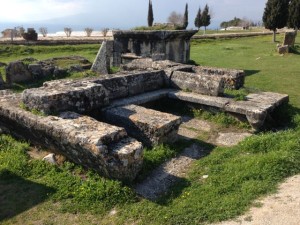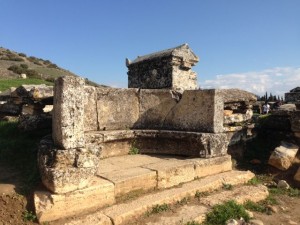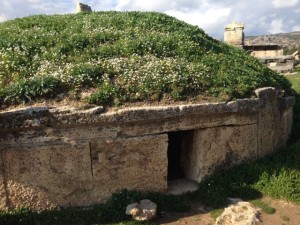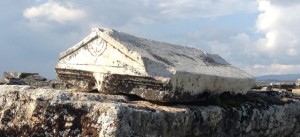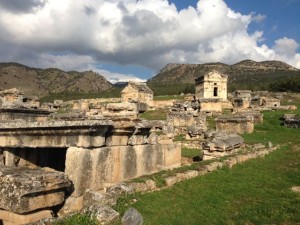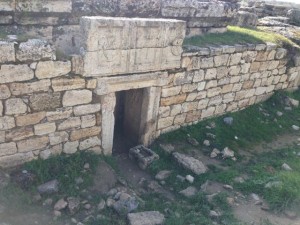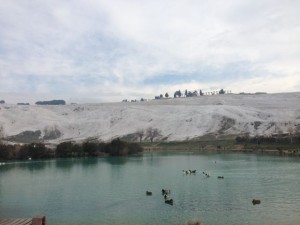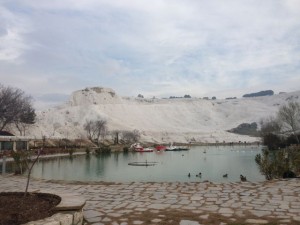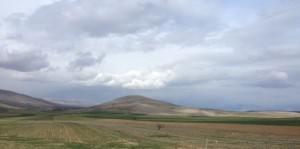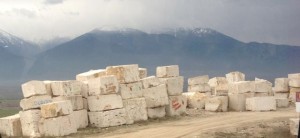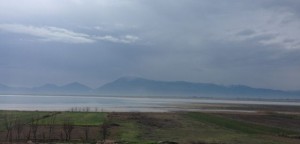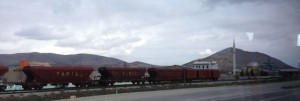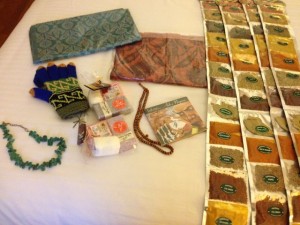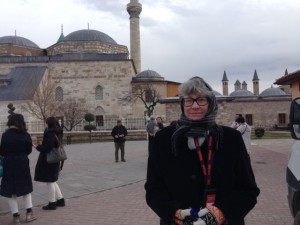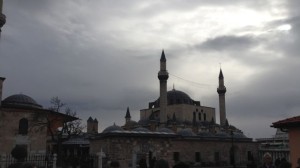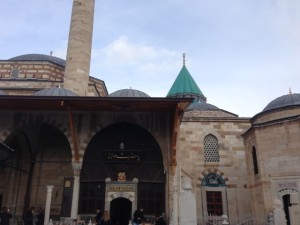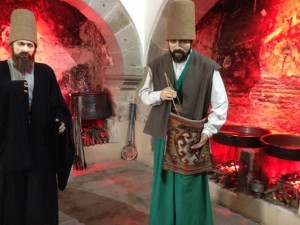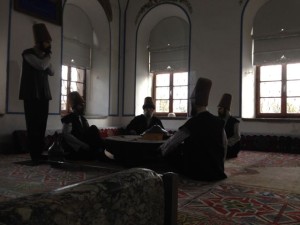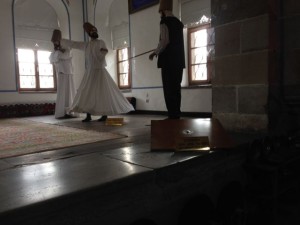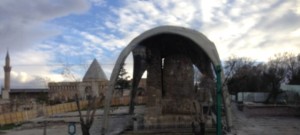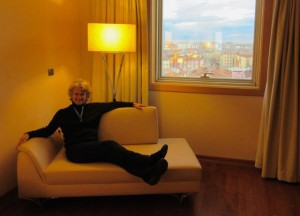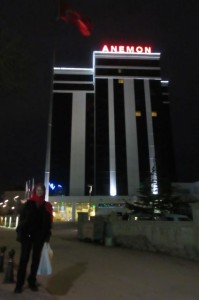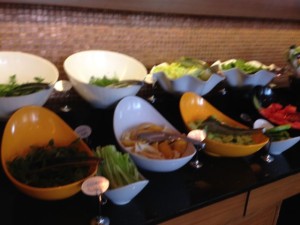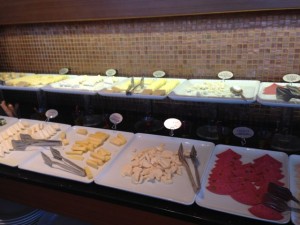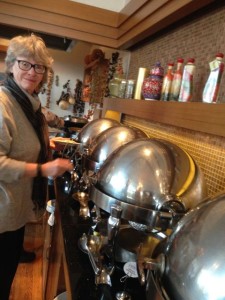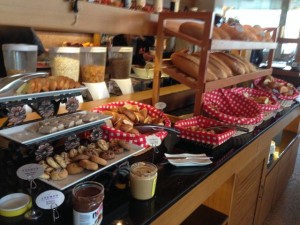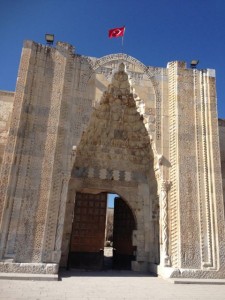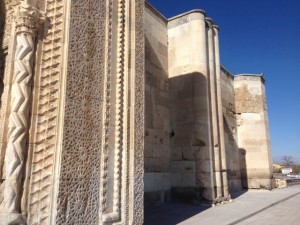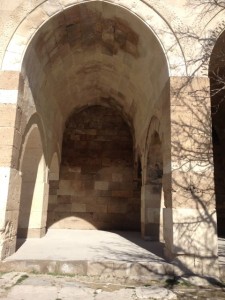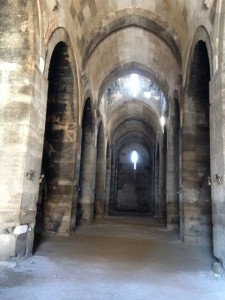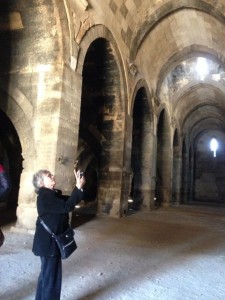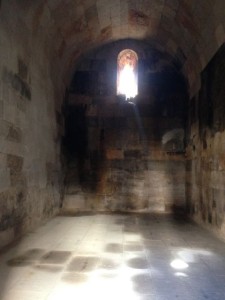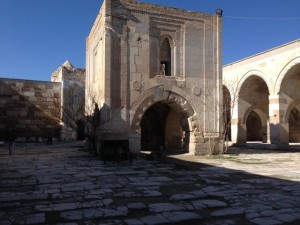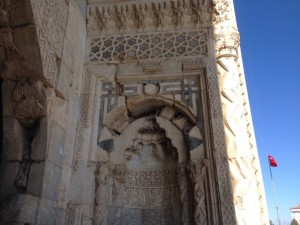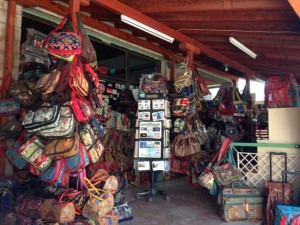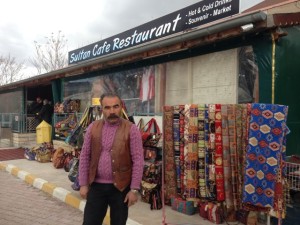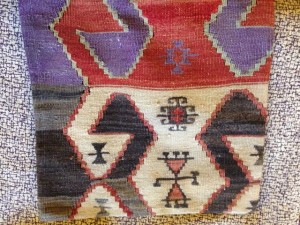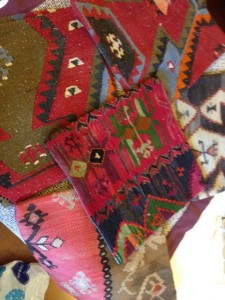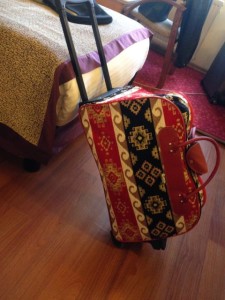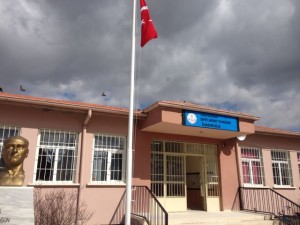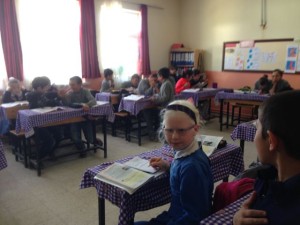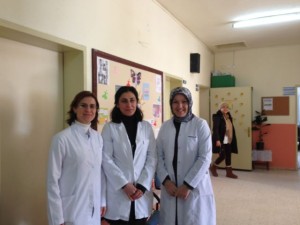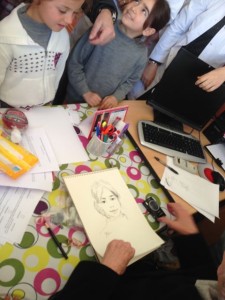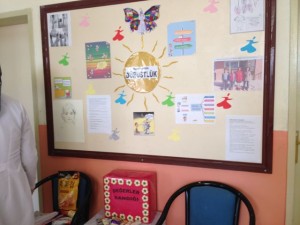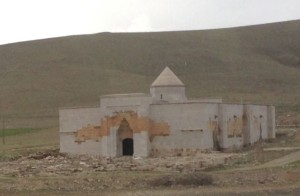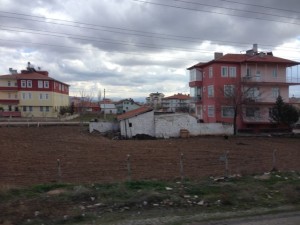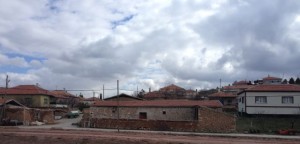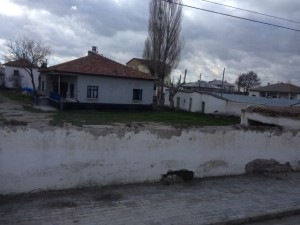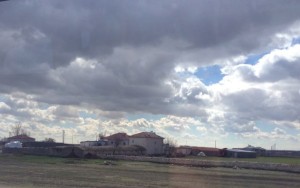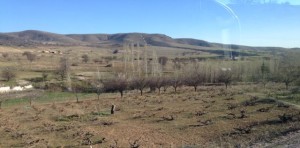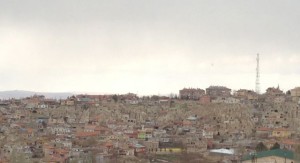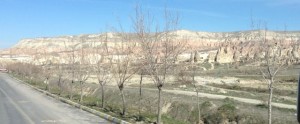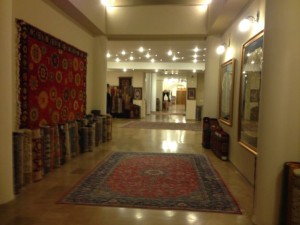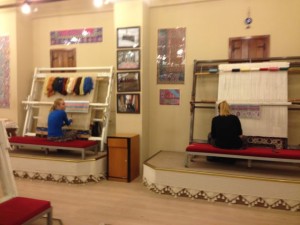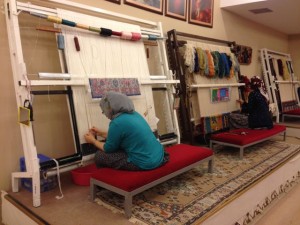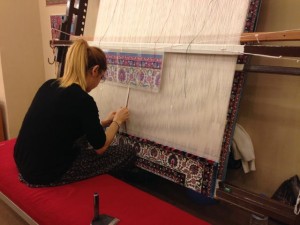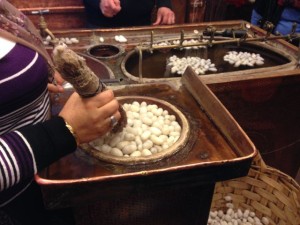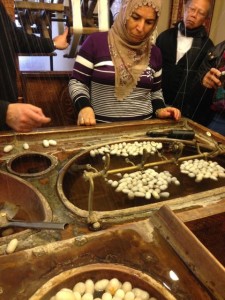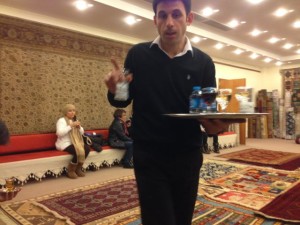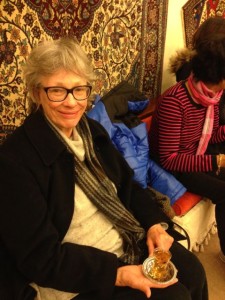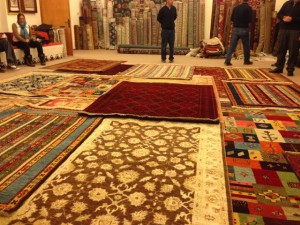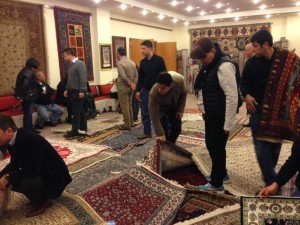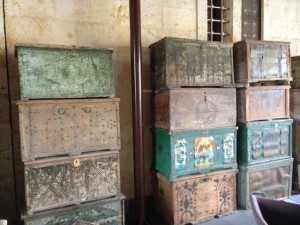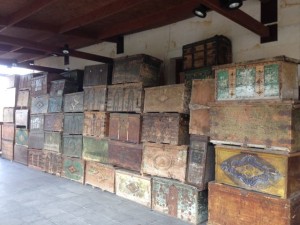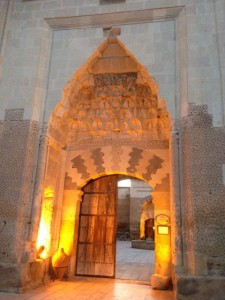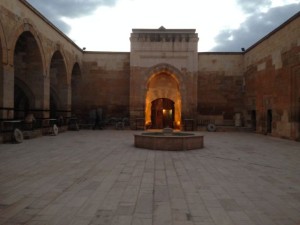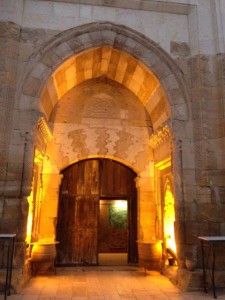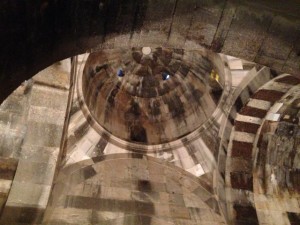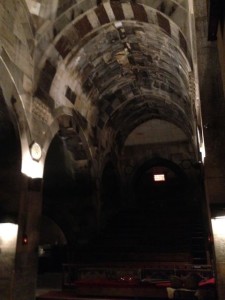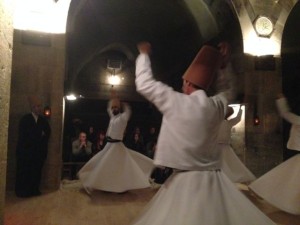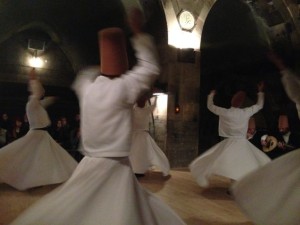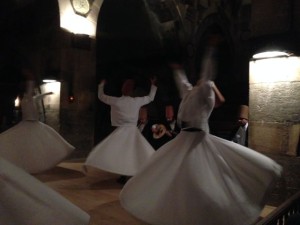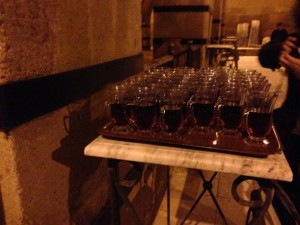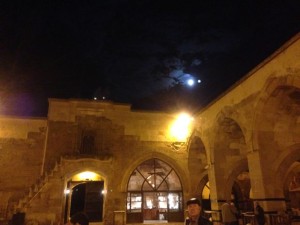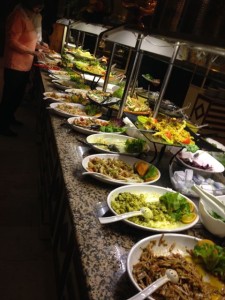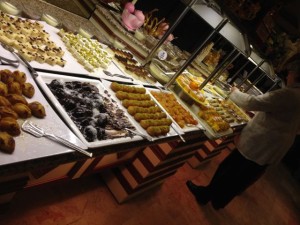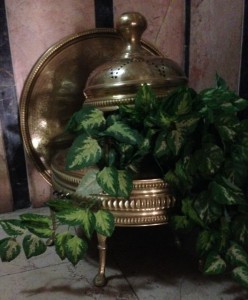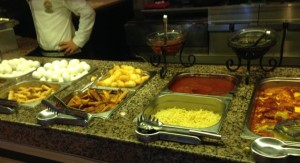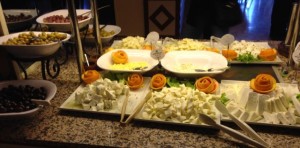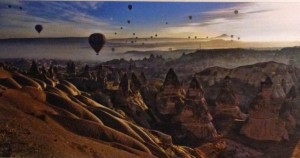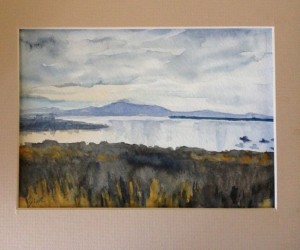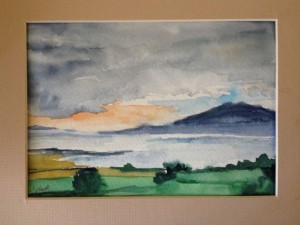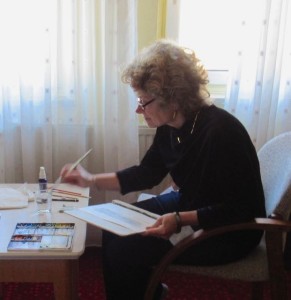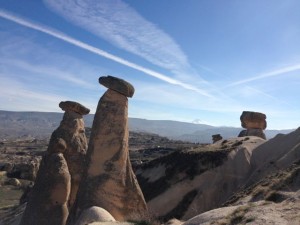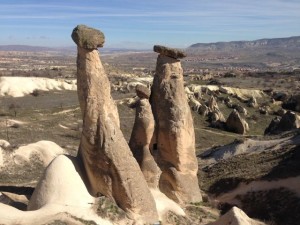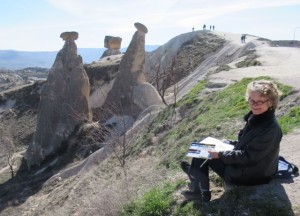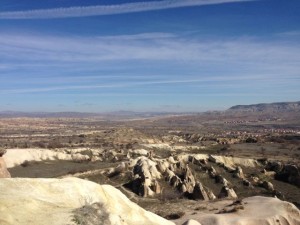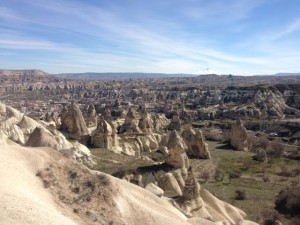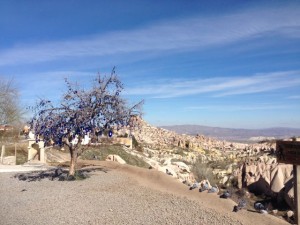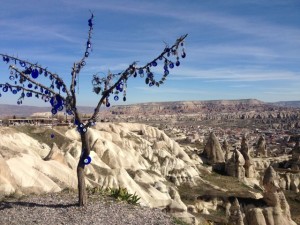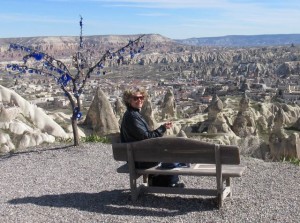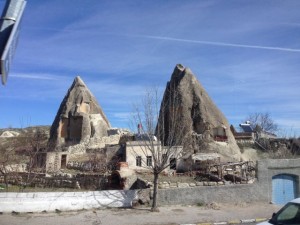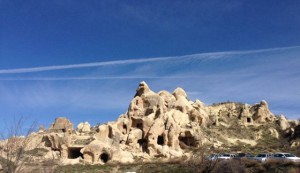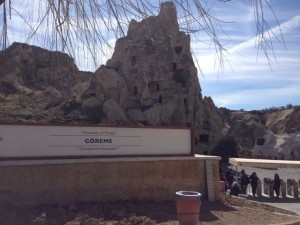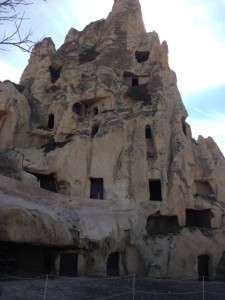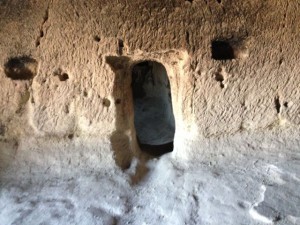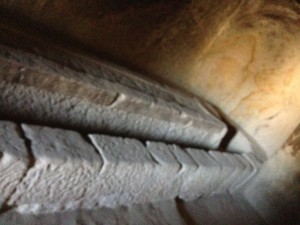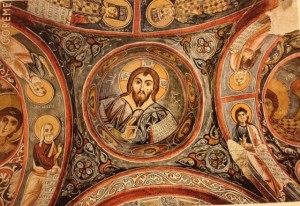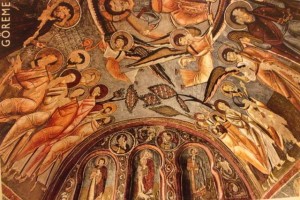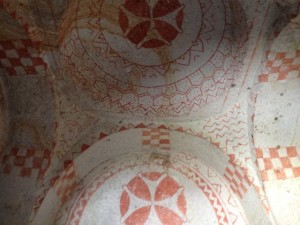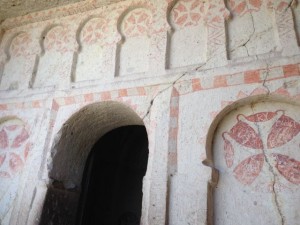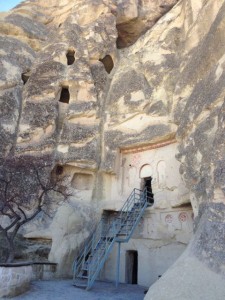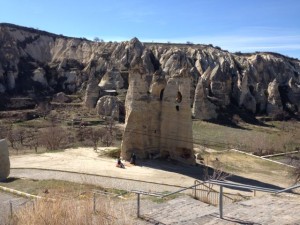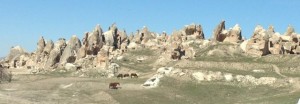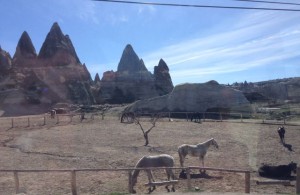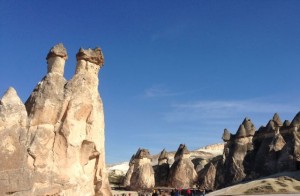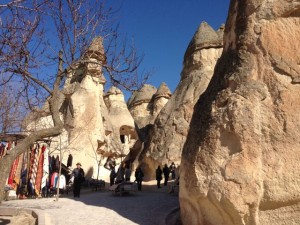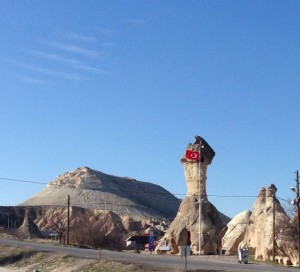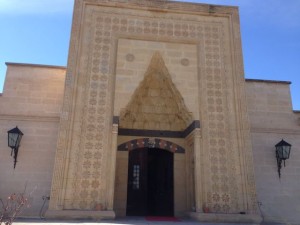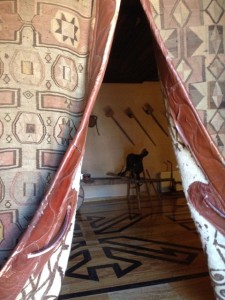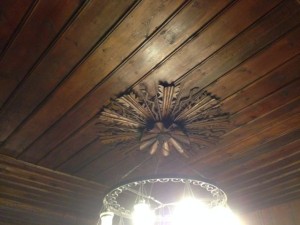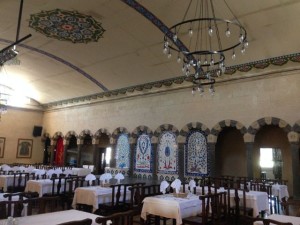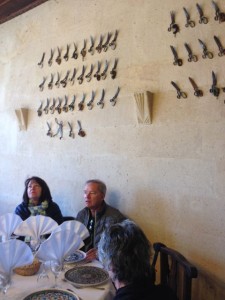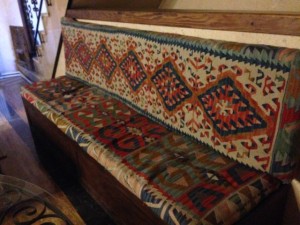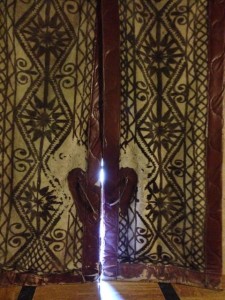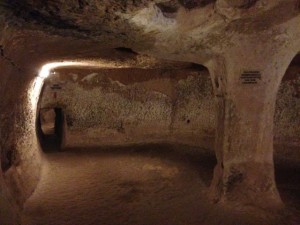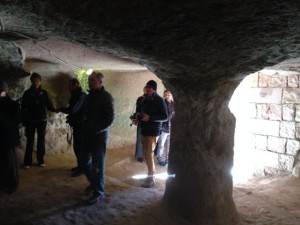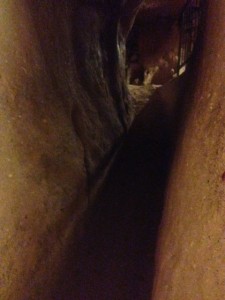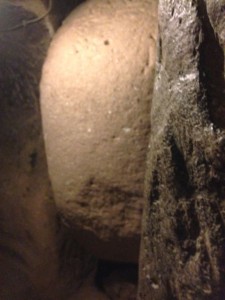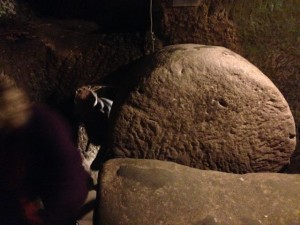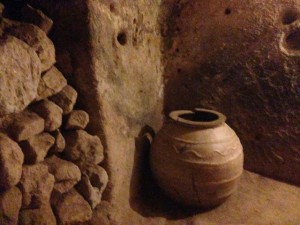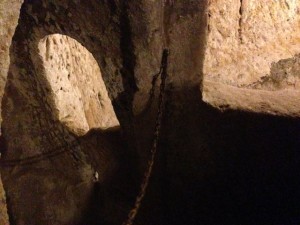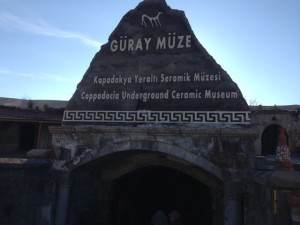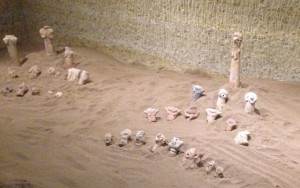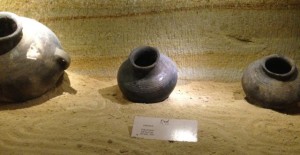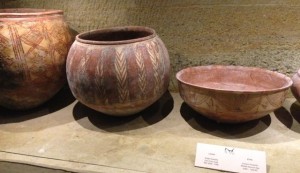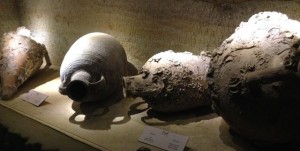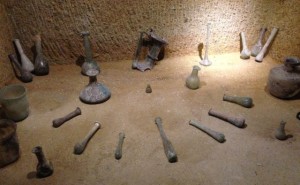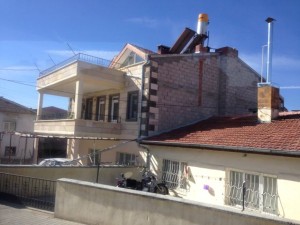The KoruMar hotel where we are staying in Kusadasi is quite the luxury resort.
Both dinner and breakfast were extravagant affairs with more selections than anyone could try.
The entire town seems to be under construction. Ellie tells me that when she visited in 2000, Kusadasi was a small fishing village. Today, it is a booming tourist resort with new complexes going up everywhere one looks. Some resorts appeal to Russians who like waterparks (we passed one huge onion dome decorated waterpark). Kusadasi gets 1500 cruise ships a year, compared to Istanbul’s 1200, and they are all here to see Ephesus.
Ephesus is worth seeing, no doubt about it. Since Ellie and I have both toured Ephesus in the past, we decide to go on our own rather than with the Gate 1 add on tour, primarily so that we would have more time in Ephesus so that Ellie could paint. We intended to take a taxi to the bus station and then catch a minibus to Selchuk/Ephesus (they run every 20 min for 5TL), but when we got in the taxi, he talked us into having him take us to the north entrance and wait for us at the south entrance, which was much more convenient than having to walk the 1.5K from the bus stop to Ephesus (south entrance) and having to return the same way. His price was 100 TL, about $40, and when we added taxi fares and bus fares, wait times, and inconvenience, we decided it was worth it. He wanted to wait for 2 hours for us, but we negotiated 4 hours for an extra 10 TL. He would wait until we came out he said.
One enters Ephesus through the state agora, a place where government business was transacted but also where people visited and played games. I bought a book with overlays of past and present (the child in me loves those things) so I can visualize what was.
Across from the Agora is the Odeon, used for musical performances and government meetings.
Just beyond the Odeon is the Prytaneon, also called the Temple of Artemis because the famous statue of Artemis was found here. In this temple housed a fire that was not allowed to go out. The statue, clearly associated with fertility, is now housed in the Ephesus Museum.
The road narrows at the Hercules gate and becomes pedestrian only (chariots and commercial vehicles had to veer around the city center to reach the harbor).
The sheer number of buildings and roads in Ephesus is daunting. In its heyday in the first century AD, it had a population of 250,000, the second largest city in the Roman Empire after Rome. The sophistication of the water system is impressive (aqueducts supplied water and clay pipes carried it through out the city. Public fountains such as the Fountain of Trajan supplied water for common people (the rich had indoor plumbing).
The Skolasitkia Bath complex housed exercise rooms, steam rooms, cool rooms, pedicure rooms, fast food, even brothels, everything an Ephesian might need, and was likely visited daily by most Ephesians. The public toilets are just a bit further. They accommodated 40 people at a time, and had a fountain in the center.
Just across from the public toilets is the entrance to the newly excavated Hillside Houses, six private houses or Ephesian condos, opened in 2009. You must pay another 15TL to enter, but it is well worth it.
The fragments of marble found in this grand room are being pieced together like giant jigsaw puzzles.
These houses had grand entrances with central courtyards open to the sky, hot and cold running water, fountains in many rooms, frescod walls, and intricate mosaic floors.
Walking through these houses gives you the feel of what it must have been like to be an aristocratic Ephesian.
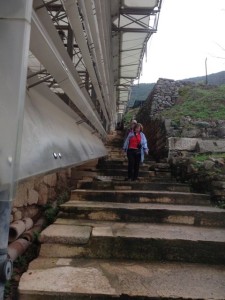 The hillside houses were accessed by a narrow stepped street. Although only six of the houses have been excavated (at enormous expense), they believe the hillsides surrounding Ephesus were lined with such houses. Just outside the hillside houses is the Library of Celsus, the 3rd larges library in the ancient world after Rome and Alexandria.
The hillside houses were accessed by a narrow stepped street. Although only six of the houses have been excavated (at enormous expense), they believe the hillsides surrounding Ephesus were lined with such houses. Just outside the hillside houses is the Library of Celsus, the 3rd larges library in the ancient world after Rome and Alexandria.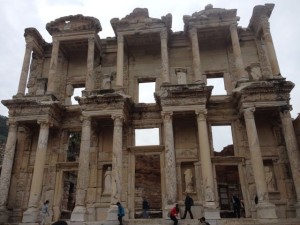
The Library of Celsus is conveniently connected to a brothel via an underground tunnel.
When Ellie pulled out her pastels to paint the library, she drew more fascinated spectators than I drew cats when I pulled out my lunch.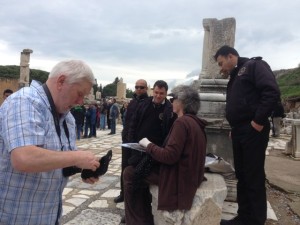
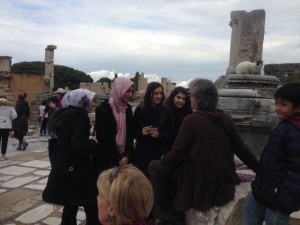
She did a second pastel of on of the hundreds of cats that roam Ephesus.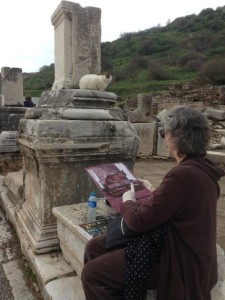
The Gate of Mazeus and Mithridates, two slaves freed by Emperor Augustus who later became wealthy, connects the library to the commercial agora or marketplace. The agora is a huge square flanked on all sides by covered walkways supported by monumental columns.
Merchants sold goods from all over the world to a population that spoke many languages so pictured carved in marble indicate what each shop sold.
Today, the agora blooms with p.oppies
Behind the agora is the theater, which seated 25,000 people and which had a three story backdrop and perfect acoustics.
Ellie did a final pastel from the theater looking out over what was once the harbor.
From the theater, a long colonnaded street leads down to the then harbor. It was lit by streetlights, lined with vendors, and is said to have been the Las Vegas of the ancient world.
Ephesus is so well preserved because the harbor silted in and the marshes bred mosquitoes that brought malaria, so the city was abandoned. Although many of the building were looted for building materials, nothing was built over it, so much of the city remained in tact for excavation.
We had a perfect day–balmy weather in the 60s, no rain (although it was predicted), and time to wander as we pleased without having to keep up with a group.




